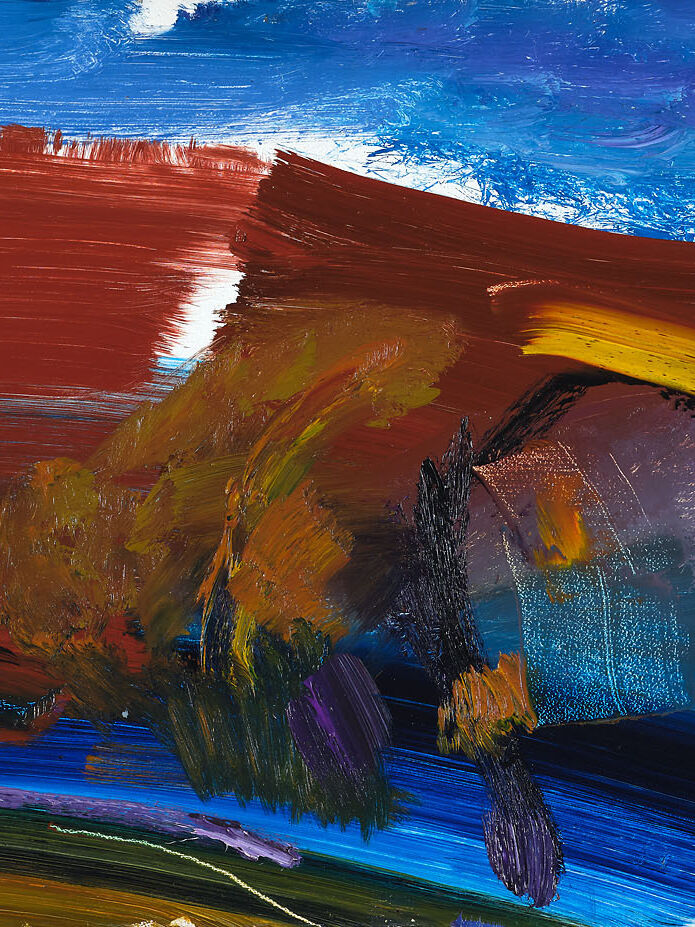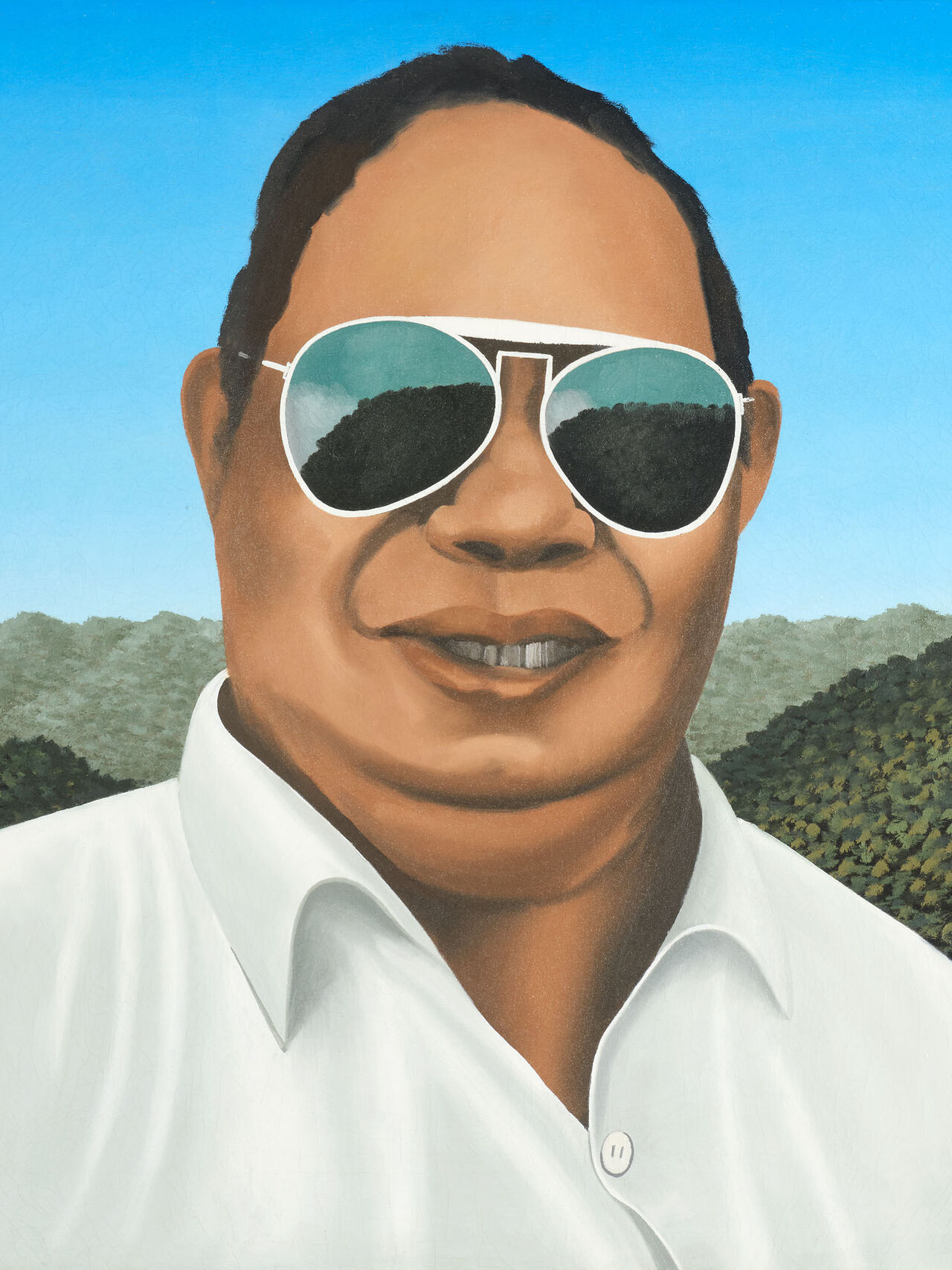Gordon Walters 'Untitled Painting'
Laurence Simmons
Essays
Posted on 29 May 2025
Surprising as it may now seem, during and immediately after Gordon Walters’ ground-breaking exhibition at the New Vision Gallery in 1966 no one, apart from Colin McCahon, certainly no reviewer, commented on the fact that the motif Walters employed was inspired by the koru or Māori kōwhaiwhai patterns. A decade after these koru paintings had surfaced in public, and Walters had continued to develop the motif, a similar thing happened with a small group of two paintings from 1974 known as Painting and Untitled Painting (the work we have here). That is, no one noticed that their stark geometric patterns were in fact inspired by a page of drawings of Marquesan facial tattoos that Walters had come across during a period of extensive library and museum research in the Alexander Turnbull Library in the 1950s. The page is to be found in an article from 1922 in a Hawaiian Museum journal by Willowdean Handy, ‘Tattooing in the Marquesas’. (1) The basic elements of the composition of Untitled Painting (1974) are derived from a page of ink drawings of a man’s face with wide bands of tattoos running horizontally across the face in parallel. Walters, however, replaces the linearity of the ink drawing with a pure geometry and planarity, deleting facial features and distortions due to the rounded nature of the face, replacing skin tone with mid-greys. Michael Dunn and others had puzzled over the fact that Walters had seemingly returned to a compositional form that appeared to re-situate him in the European abstract tradition. It was only much later Francis Pound informs us when standing in front of the companion painting to this one, in a dealer gallery together with Walters’ widow, Margaret Orbell, that he was told that it was based on a Marquesan facial tattoo. Walters in the 1993 inventory of his paintings had simply referred to the two paintings as Abstract Painting I and Abstract Painting II. What surprises, continues Pound, is “the discovery that the boundaries between abstraction and figuration can be frail, despite all modernist claim to the contrary.” (2) What equally surprises, and is often overlooked, is Walters’ extensive cross-cultural dialogue with the indigenous arts of the Pacific.
Now we might say that ‘the secret is out’. Once you know it is an awareness that is invisible but palpable, and rather than ‘look’ at this painting you almost ‘watch’ as if some ultimate secret were in the offing if you wait, not to be missed when it reveals itself. Ethnic identity is not so much asserted as welded into a sophisticated aesthetics. The work’s asymmetrically structured bars seemingly generate an effortless majesty, the stentorian blacks engage in a formal dance with a modulation of greys. Walters brought to everything he did an attitude of formal rigour but it has become apparent over the years that plenty of emotion, like banked-up fire, underlies his compositions. One of the results of ‘knowing the secret’ is that you become more conscious of your physical relation to the canvas. For you are now asked to think about how you are standing in front of a face that is the size of the painting. In what way are you now looking ‘face to face’? What Walters also does is at one point divide the painting into white and grey blocks reminding us of how the two halves of a face are mirror images of each other. So, now we can understand this material division conceptually. And is it not telling that the formats of most of Walters’ paintings are ‘portrait’ rather than ‘landscape’ in orientation? For Francis Pound this “equivalence of size” (canvas to human body) meant a Walters’ painting “is the body, like us, a bilateral, symmetrical breathing being.” (3)
Another result of the ‘secret’ revealed is how the metaphor of a palimpsest becomes apposite for Walters’ painting. A palimpsest is a surface on which the original text has been effaced or partially erased, and then overwritten by another. This metaphor of a palimpsest not only describes Walters’ paintings where something (a source) is always held back, hidden, a force at odds with its own circumscription, but also Walters’ working method, his way of applying paint where we have layers upon layers, the unseen ghosts of older surfaces of paint lurk, over-washes press further and further down, so the surface acquires a density, a luminosity of colour and depth. Untitled Painting at first sight appears simple, lucid, clear in its astringent minimal geometry and abstraction but, as we have seen, this magnificent work hides a deeper vocabulary. It is hardly by chance that, as the last entry on the last page of his working notebook, Walters inscribed this quotation from Paul Valéry: ‘What can be more mysterious than clarity?’(4)


